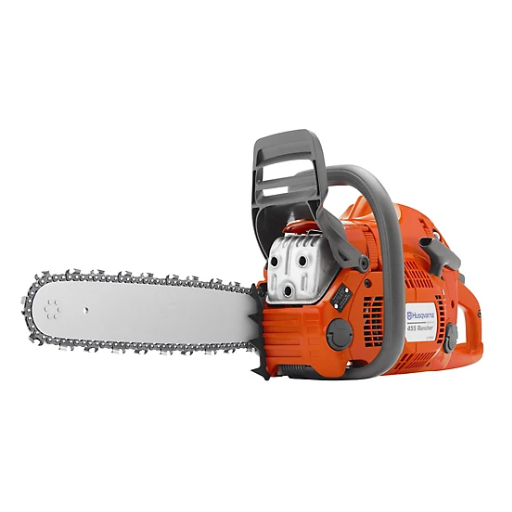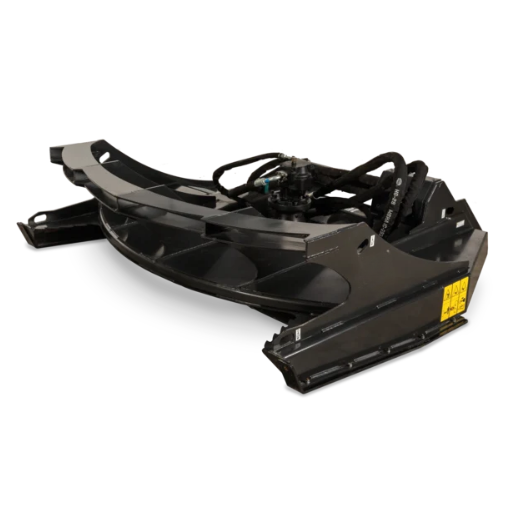Fence Line Clearing Equipment
Home » Land Clearing Equipment » Fence Line Clearing Equipment
Whether you’re leveling the land or performing detailed fence row clearing, our tools bring precision and reliability to every project. Partnering with trusted Chinese manufacturers, we ensure our equipment is durable, cost-effective, and built to last. The benefits of clearing your land go beyond aesthetics—open space fosters healthier growth and improves accessibility. Turn your vision into reality with tools engineered for success. Ready to take the first step? Explore our fence clearing solutions today!
Get Information on Lawn Leveling Equipment Manufacturers
Find Your Fence Line Clearing Equipment
Clearing a fence line requires the right tools to get the job done efficiently and safely. This guide will help you find essential fence line clearing equipment, covering tools and machinery designed to handle overgrown vegetation, brush, and other obstructions.
Fence Line Clearing Equipment for sale
Discover durable and efficient fence line clearing equipment for sale. Perfect for maintaining clear boundaries, our tools ensure precision and ease for all your land clearing needs.

- Ideal for cutting through dense undergrowth, weeds, and small bushes with precision.
- Lightweight and portable, making it easy to maneuver in tight or uneven spaces.
- Reduces manual labor significantly, offering efficient clearing in large areas.

- Powerful for cutting through tree branches, logs, and thick vegetation along fence lines.
- Adjustable blade sizes cater to different tasks, from trimming to heavy-duty cutting.
- Durable and efficient, minimizing the time required for clearing heavy obstructions.

- Capable of clearing large areas of heavy brush and vegetation rapidly.
- Versatile with multiple attachment options, making it useful for various land management tasks.
- Robust and durable, suited for more extensive or rugged terrains.
Fence Line Clearing Equipment Technical Parameters
| Equipment Name | Key Features | Application | Price Range |
|---|---|---|---|
| Brush Cutter | Heavy-duty blades, portable design | Cutting dense grass and shrubs | $200 - $500 |
| Chainsaw | High-powered motor, ergonomic handle | Cutting thick tree branches | $150 - $600 |
| Pole Saw | Extended reach, lightweight | Pruning tall branches | $100 - $300 |
| Skid Steer with Mower Attachment | High-efficiency cutting, durable build | Clearing large fence line areas | $5,000 - $15,000 |
| String Trimmer | Dual-head design, adjustable shaft | Cutting light vegetation | $50 - $200 |
| Stump Grinder | Heavy-duty tooth wheel, compact size | Removing tree stumps | $1,000 - $4,000 |
| Hedge Trimmer | Dual-action blades, cordless options | Trimming overgrown hedges | $50 - $300 |
Key Fence Line Clearing Equipment and Tools
Brush Cutter
A brush cutter is a versatile tool designed to clear thick grass, weeds, and small brush along fence lines. Featuring a high-powered engine and cutting blades, it handles heavy-duty vegetation that traditional trimmers cannot, ensuring your fence line remains tidy and free of overgrowth.
Chainsaw
Chainsaws are essential for cutting through thick trees and branches obstructing fence lines. Their sharp, durable chains and powerful engines allow quick removal of heavy woody debris, making them a top choice for tackling larger clearing tasks effectively and efficiently.
Hedge Trimmer
Hedge trimmers are ideal for maintaining and shaping overgrown hedges and shrubs near fences. These lightweight, easy-to-use tools feature precision blades that deliver clean cuts, keeping vegetation well-maintained while preventing encroachment along your fence line.
Skid Steer with Brush Attachment
A skid steer with a brush attachment is an excellent solution for clearing larger fence line areas. The attachment grinds down thick vegetation, including stumps and bushes, while the skid steer's versatility ensures efficient operation across various terrains.
Pole Saw
Pole saws extend your reach, allowing you to trim branches and vine overgrowth from taller trees along fence lines. With a powered cutting mechanism and telescoping handle, the pole saw is perfect for safely accessing and clearing vegetation in hard-to-reach areas.
Stump Grinder
A stump grinder is used to completely remove tree stumps that interfere with fence lines. Its rotating cutting wheel quickly grinds stumps into mulch, ensuring a clear workspace and preventing issues with regrowth or pest infestations around your fence.
Expert Insights on Fence Line Clearing Equipment

The best equipment for clearing fence lines depends on the type of vegetation and the size of the area. For dense brush and small trees, a brush cutter or heavy-duty weed trimmer with a metal blade is ideal. Chainsaws or pole saws are excellent for cutting larger branches and overgrowth. A push or tow-behind brush mower is a great choice for larger areas, as it can efficiently handle thick grass and weeds. For finishing touches, a string trimmer can help clear grass and weeds close to the fence posts.
Mowing next to a fence can be tricky, but a string trimmer is one of the best tools to achieve a clean result. Start by mowing the lawn as close to the fence as possible with a regular mower. Then, use a string trimmer to cut the grass around the fence posts and along the fence line where a standard mower can't reach. Be sure to keep the string trimmer at a proper angle to avoid damaging the fence or cutting it unevenly.
To stop weeds from growing on a fence line, regular maintenance and preventative measures are key. Applying a layer of mulch or gravel along the fence line can act as a barrier, preventing weed growth. Alternatively, spraying an herbicide or a homemade vinegar solution can help kill weeds before they become overgrown. Installing landscape fabric beneath the fence line is another effective long-term solution. Additionally, routinely trimming or mowing the area helps to keep weeds under control.
To clear dense vegetation, a brush cutter or heavy-duty string trimmer is highly effective. For tougher shrubs or small trees, a chainsaw or a brush mower might be needed. Skid steer attachments like brush cutters can also be considered for large-scale operations.
Tree stumps can be removed using a stump grinder for smaller stumps or an excavator for larger ones. Alternatively, you can use a chemical stump remover for gradual decomposition, but this method takes more time.
How to Choose the Right Fence Line Clearing Equipment Tool?
- Assess Your Fence Line Needs - Determine the vegetation type and scale to select the appropriate tool for clearing, such as chainsaws or brush cutters.
- Consider Power Source - Decide between gas-powered, electric, or battery-operated equipment based on runtime, convenience, and work area accessibility.
- Prioritize Durability and Build - Opt for tools made of high-quality, durable materials to withstand tough clearing tasks and prolong equipment life.
- Evaluate Ease of Use - Look for lightweight, ergonomic designs that reduce fatigue during extended use while maintaining efficiency and safety.
Basic Maintenance and Safety Guidelines
- Regularly inspect equipment for damage or wear, and replace faulty parts promptly to prevent accidents.
- Clean tools after each use to maintain performance and longevity.
- Wear protective gear, including gloves, goggles, and sturdy boots, to ensure personal safety during operation.
- Store equipment in a dry, secure location to prevent rust and unauthorized use.
Key Benefits of Fence Line Clearing
Improved Property Aesthetics:
Clearing fence lines enhances the overall appearance of your property by removing overgrowth, debris, and unwanted vegetation, creating a cleaner and more maintained landscape that boosts curb appeal and value.
Enhanced Security:
Well-maintained fence lines allow better visibility and accessibility, reducing potential hiding spots for intruders and preventing unauthorized access, thus improving the security of your property.
Reduced Pest Infestations:
Removing overgrown vegetation near fences eliminates habitats for pests like rodents and snakes, decreasing the likelihood of infestation and ensuring a safer environment for humans and livestock.
Extended Fence Lifespan:
Clearing overgrowth prevents vegetation from damaging fences through rot and excessive pressure, helping to preserve the structural integrity of fencing materials and reduce costly repairs or replacements over time.
Frequently Asked Questions
Common equipment includes brush cutters, chainsaws, skid steer attachments, pole saws, and trimmer mowers. Each tool serves specific purposes depending on the vegetation and obstacles along the fence line.
Selecting the right equipment depends on factors such as the size of the area, the type of vegetation, and the terrain. For dense brush or trees, more robust tools like chainsaws or skid steer attachments may be necessary.
For smaller projects, lightweight and manual tools like trimmers or brush cutters might suffice. However, professional-grade equipment is ideal for larger-scale or heavily overgrown areas, as it ensures efficiency and durability.
Always wear protective gear, including gloves, safety glasses, hearing protection, and sturdy footwear. Ensure tools are maintained properly, and operate them according to the manufacturer’s instructions to prevent accidents.
Yes, many equipment rental companies offer a range of options for clearing fence lines. Renting allows you to access specialized tools without incurring the cost of purchasing equipment outright.
Regular maintenance includes cleaning tools after use, sharpening blades, checking for wear and tear, and storing equipment in a dry, secure location. Following the manufacturer’s guidelines ensures optimum equipment performance and longevity.

